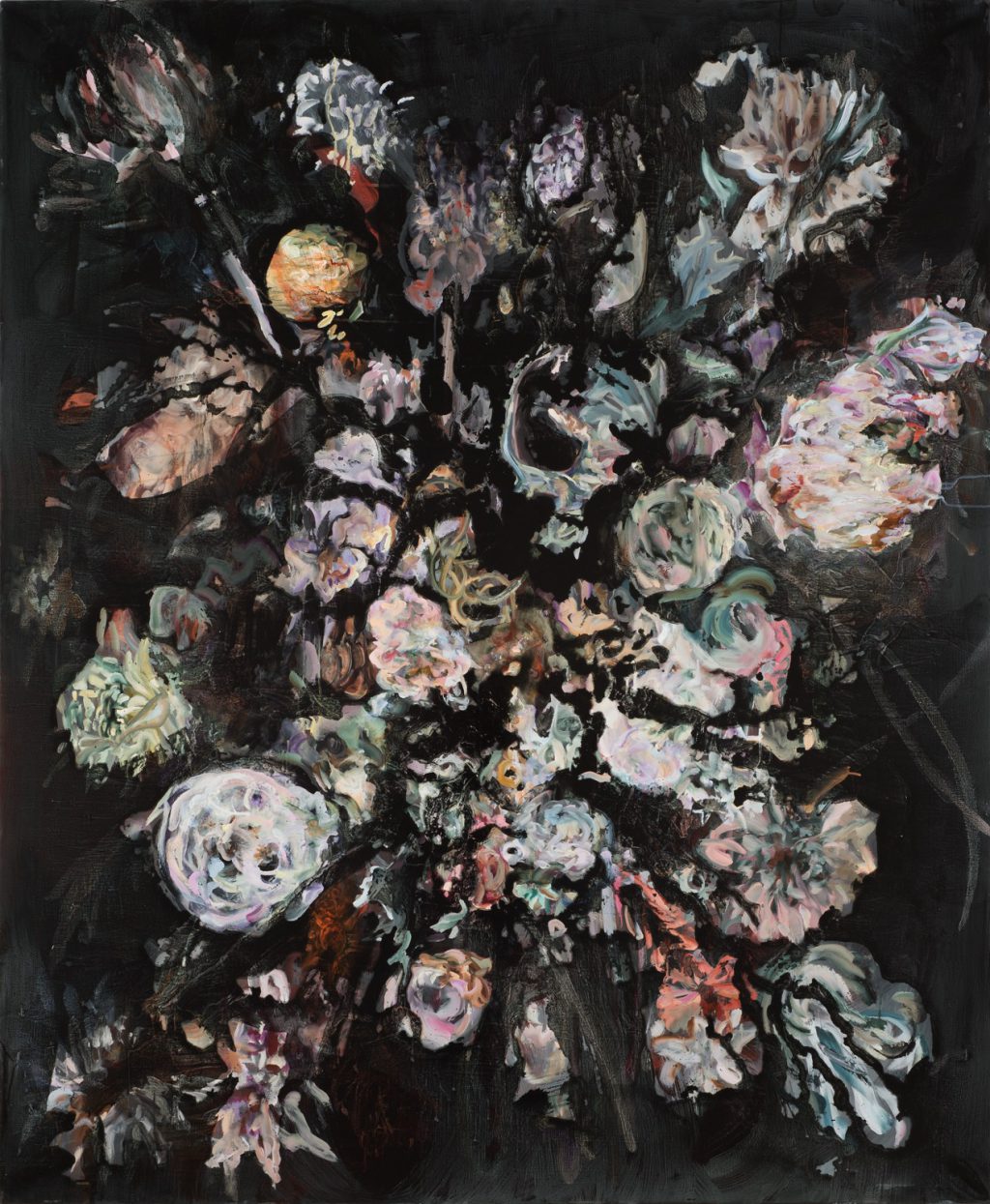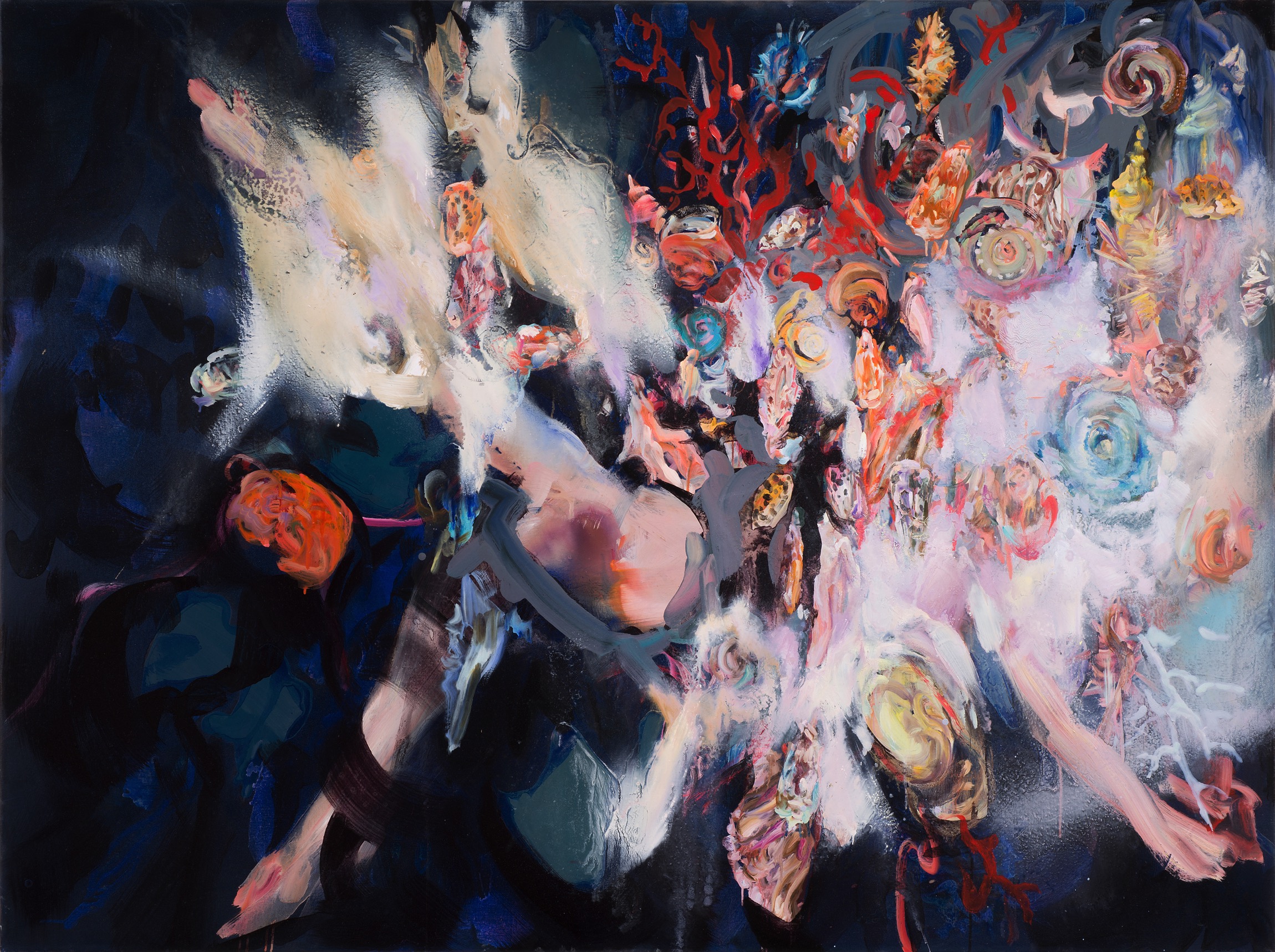Alisa Margolis
The Disappearance
Works

Pastoral
2014
Oil and resin on canvas
175 × 220 cm

Birth of Venus
2014
Oil and resin on canvas
120 × 160 cm

Double Portrait
2014
Oil and resin on canvas
160 × 120 cm

Kissology
2014
Oil and resin on canvas
160 × 200 cm

The World Is Yours
2013
Oil and resin on canvas
200 × 140 cm

Musical Family
2013
Oil and resin on canvas
100 × 75 cm


Bela Russe
2013
Oil and resin on canvas
120 × 100 cm

Sun Loving
2014
Oil and resin on canvas
190 × 120 cm

Everything All the Time
2013
Oil and resin on canvas
190 × 130 cm

Kiss them for me
2014
Oil and resin on canvas
160 × 120 cm

Galan
2014
Oil and resin on canvas
120 × 170 cm

Believer
2013
Oil and resin on canvas
170 × 140 cm
About
For The Disappearance, her first exhibition with Galerie Judin, Alisa Margolis has created 12 new paintings, most of which draw back upon key moments in her artistic development. Much of the work on view stems from a technique of over-painting in which Margolis creates an abstract, often black background or reuses previously abandoned canvases as bases for her expressive brushstrokes of color which converge to touch on the outside limit of being figurative while remaining in a liminal zone. A body may arise from a confluence of fleshy tones, an equine head from some swaths of grey but the figures are at most an essentialized suggestion of their full forms. These works represent a subtle but significant recent shift in paradigm from her previous series in which the black background seems to have seeped from the canvas’s four edges, slowly eating away at the vibrant color beneath.
Margolis’ paintings rise from simple beginnings: flowers, the baroque, glam rock, fashion magazine ads, satellite photos of far off galaxies, heavy metal, cheerleaders, and Dutch vanitas painting among them, lining her studio floor on overlapping pieces of copy paper. The banal is central to the organization of her major tropes. However, where one’s typical Gen-Xer might approach banality by casting it aside with a heavy dose of irony, Margolis’ position is one of earnestness. She lets herself become seduced by the very canniness of her themes, to take them on with almost religious dedication.
Continue reading
Indeed transcendence, a power gained through the routine acceptance that one is ultimately powerless, is central to her practice. But, all the same, Margolis’ art is by no means a treatise on God and all that is holy. On the contrary, her paintings posit contemporary analogues to the religiosity of her predecessors, those analogues reprocessed through art historical modes to create results that are both timely in content and near timeless in form.
Born in the former Soviet Union in 1975, Margolis immigrated to New York with her family at the age of four. And, though her art pulls mainly from Western European and American traditions, her Soviet roots shine through. The paintings’ floral motifs and intricate detailing recall the enameled serving platters and craft objects of that tradition, Margolis’ immanent attention to rendering — and in many cases its programmatic deconstruction — brought on by countless forgotten master émigrés of the USSR foisted upon her during more formative years to better her brushes’ precision against the canvas. An affinity for America’s Abstract Expressionism developed — Pollock’s influence on her brushstrokes in this exhibition’s paintings is apparent, despite their very flat surfaces; Margolis took to his floor-based painting technique as well. However, it was Rubens and other painters of the 17th Century Baroque who truly captured Margolis’ aesthetic imagination.
Upon moving to Amsterdam in 2001 to take up residence at De Ateliers after having previously graduated from Columbia University in New York, Margolis snatched upon this attraction. She departed from a previous practice that saw cheerleaders stacked high like some towering homage to the high school nightmare and began making monumental floral canvases up to three meters in length. Her works have remained large, nearly always addressing their viewer at one-to-one, human scale. They suck in the beholder through their almost narrative compositions, which shift just as you believe to have the work resolved bringing forth yet another many minutes’ contemplation.
Her so-called bouquet works dominate The Disappearance with their explosively colorful, floral motifs, which dissolve into pure abstraction on approach. They are at once bouquets, fiery explosions, and homage to the modernist’s handbook of gestural abstraction. However, it’s at close range that one can piece together the next stage in Margolis’ artistic development. That began, oddly enough, catching images on the internet of concerts by the flamboyant, heavy metal band Kiss. In an attempt to conceive of a cathedral for the present day, Margolis dove into the fan-zines and websites that surround the band and became subsumed in both the kitsch — flashing colored lights, flying face painted band members hanging from hand-hoisted ropes, the gritty screeching music — and the spectacle’s calculated reliability; every concert she watched no matter from the 70s or 00s featured a nearly identical replication of the act.
The band itself — and other musical points of repair like Axl Rose — makes only cursory appearances in Margolis’ paintings. A composition of ghostly silhouette may have a Kiss-like air, or stage lights may seem to strobe on the painting’s surface. The band’s methodology and affect has become deeply sown into the fabric of Margolis’ art, however. The works bank on this contemporary version of the smells and bells of the church, their reassuring and memory-jolting potentiality. Her paintings simultaneously exert a conservative impulse, a hope that despite our wealth of knowledge brought on by an ever-more digital world, wonder and indeed belief in these simple moments of spectacle whether they be supernatural, scientific, hard rock, or painting for that matter can be preserved. A.F.





















